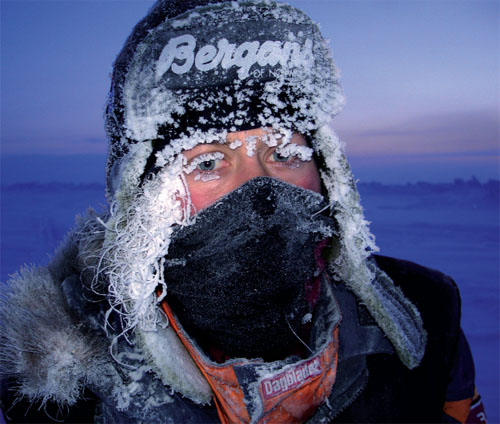![]() Cecilie Skog
Cecilie Skog
Adventurer • Norway
“We adventurers are ambassadors for the environment by giving voice to what we see on route to the rapidly changing poles”
Cecilie Skog is the only woman in the world to have climbed the Seven Summits, the highest mountains of every continent. A pediatric nurse by training, she achieved the so-called Explorers’ Grand Slam by adding the South Pole (2005) and the geographic North Pole, (unsupported 2006) to the seven summits. She covered the 500 miles between Ellesmere Island in Canada and the Geographic North Pole on skis.
I am not a scientist, I am merely an adventurer who has been fortunate enough to see some of my dreams come true. In 2005 and 2006 I travelled to the North and South Pole. Two of my good friends joined me on these projects. We had already crossed Greenland prior to our South Pole journey. But the Arctic Ocean was unknown territory to us. The Norwegians first attempted to conquer the North Pole at the end of the 1800s, but it was not until 1982 that a Norwegian claimed this victory. With the help of snowmobiles, Ragnar Thorseth achieved what the famous explorers Fridtjof Nansen and Hjalmar Johansen had set out to do almost 100 years earlier. We decided to use skis and sledges. Our plan was to orient ourselves using the sun and our shadows. Not only is this method both quicker and more efficient than using a compass, it was also a method we had previously used. However, this proved to be a challenge as we kept encountering whiteout, in which it was hard to manoeuvre. Whiteout occurs when the ocean evaporates from open holes in the ice and the vapour settles like a thick fog. The holes in the ice not only caused ocean fog, but also turned into a challenge themselves. We presume that when Ragnar Thorseth drove the snowmobile to the North Pole, he was blessed with thick and solid ice. On our journey, the ice was extremely thin in vast areas and the number of holes was far above our expectations. Some days we had to cross up to 25 holes; some were too wide to swim across, resulting in long detours. The weather was also rougher than envisaged. The wind caused difficult conditions during the day and night. To lessen the weight, we brought a light, small tunnel tent instead of a dome tent, which is heavier, but more stable in windy weather. So we had to take turns safeguarding the tent poles some nights. The climatic challenges made the expedition more strenuous than expected. Currently, we are planning new expeditions to the poles. This time, with an environmental focus on our journey as well. We feel that we can be ambassadors for the environment by giving voice to what we see en route to the rapidly changing poles. As eye witnesses, we feel we can direct additional focus on this important issue. I am merely an adventurer, who dreams of breathing fresh air, living moments in the wild beauty of nature. If the next generation is to enjoy this beauty, we need to strive for a healthier planet and fight for a cleaner world.

